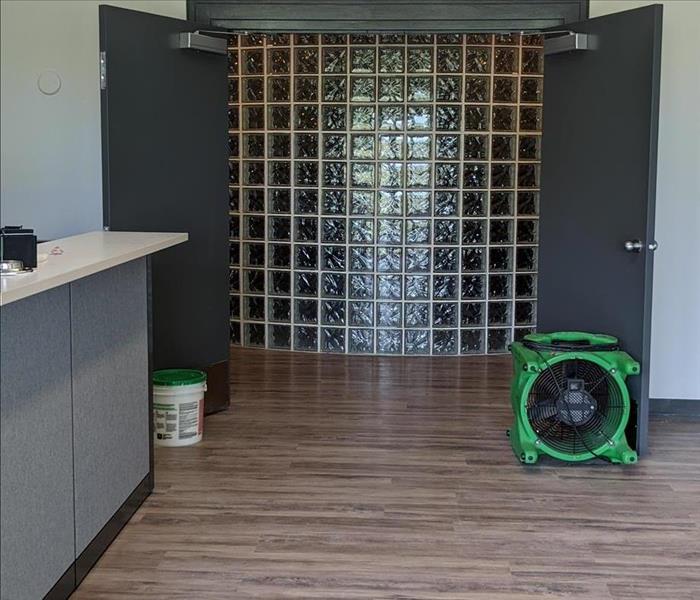The Science of Dehumidification: Restoring Indoor Air Quality
6/12/2024 (Permalink)
 In this blog, we will explore the concept of dehumidification, its benefits, and how it can be used to restore indoor air quality.
In this blog, we will explore the concept of dehumidification, its benefits, and how it can be used to restore indoor air quality.
Dehumidification plays a vital role in the water restoration process, especially when it comes to restoring indoor air quality. Understanding the science of dehumidification can help you comprehend its importance in maintaining a healthy and comfortable environment. In this blog, we will explore the concept of dehumidification, its benefits, and how it can be used to restore indoor air quality.
What is Dehumidification?
Dehumidification is the process of removing excess moisture from the air, reducing humidity levels, and creating a comfortable and healthy indoor environment. High humidity levels can promote the growth of mold, mildew, and bacteria, leading to potential health hazards and property damage. Dehumidification helps to eliminate excessive moisture and restore balance to indoor air quality.
The Benefits of Dehumidification
Dehumidification offers a range of benefits that contribute to a healthy and comfortable indoor environment. Here are some key advantages of incorporating dehumidification into the water restoration process:
- Mold and Mildew Prevention: High humidity levels provide the ideal conditions for mold and mildew growth. Dehumidification removes excess moisture, preventing the proliferation of these harmful substances and reducing associated health risks.
- Odor Reduction: Excessive moisture in the air can cause unpleasant odors and musty smells. Dehumidification helps eliminate these odors by addressing the root cause: high humidity levels.
- Enhanced Indoor Comfort: High humidity can make the air feel heavy and stifling. Dehumidification helps create a more comfortable indoor environment by reducing humidity levels and making the air feel lighter and more breathable.
- Protection for Your Property: Excessive moisture in the air can damage furniture, electronics, and other valuable assets. Dehumidification helps to protect your property by reducing the risk of water damage and preserving its integrity.
The Dehumidification Process
Dehumidification involves several key components that work together to remove moisture from the air. These components typically include:
- Dehumidifier Unit: The dehumidifier unit is the core component of the system. It draws in humid air, cools it to condense moisture, and collects the water in a reservoir or drains it away.
- Evaporator Coil: The evaporator coil inside the dehumidifier cools the incoming air to lower its temperature, causing moisture to condense and collect.
- Condenser Coil: The condenser coil then reheats the air, returning it to its original temperature before being released back into the room.
- Drainage System: Excess water collected during the dehumidification process is either stored in a reservoir that needs to be emptied or drained away via a hose.
Dehumidification in the Water Restoration Process
Dehumidification is a critical component of the water restoration process, particularly after water damage incidents. It helps to remove excess moisture from the air, accelerate the drying of structural components, and prevent further damage from occurring. Professional restoration technicians often employ advanced dehumidification techniques and equipment to ensure effective moisture removal and restoration of indoor air quality.
In conclusion, understanding the science of dehumidification is crucial for comprehending its significance in restoring indoor air quality. By removing excessive moisture from the air, dehumidification helps prevent mold growth, reduce odors, enhance comfort, and protect your property. When it comes to water restoration, incorporating dehumidification techniques can facilitate the efficient and effective drying of affected areas, ensuring a safe and healthy environment. For expert assistance in dehumidification and water restoration, consider reaching out to SERVPRO®. Our trained professionals can provide comprehensive solutions to restore indoor air quality and address water-related issues properly.



 24/7 Emergency Service
24/7 Emergency Service